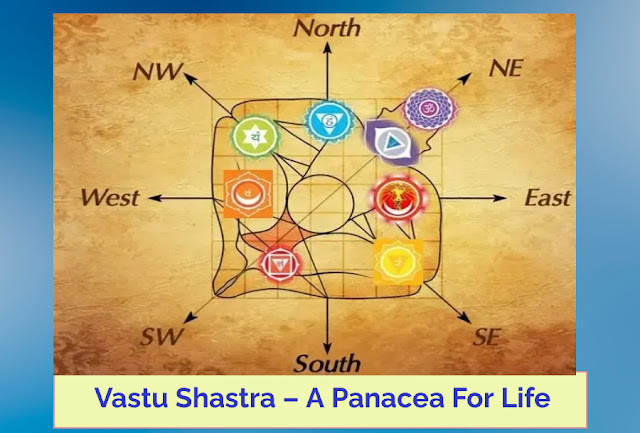Vastu Shastra - A Panacea For Life
This blog wThis blog will explain the history of Vastu Shastra, Vedic Vastuill explain the importance of the Vastu Shastra, Vastu, Vedic Vastu
Vastu Shastra: The whole universe is comprised of the Panchamahabhutas' that is, the five elements of nature.
These are Earth, Fire, Water, Air, and Space.
They are often referred to also as the Panchtatwa. The human body is equipped with five senses: scent, taste, hearing touch, and sight. Five senses are related to the Panchamahabhutas.
Vastu helps people to be in harmony with the five natural elements. The science behind the arrangement of these five elements in any particular area.
Our revered sages were familiar with the concepts of matter and energy. They recognized energy in every shape and form of matter. This is reflected in the Vedic notion of Prakriti as well as Purusha, or soul and body. In this way, we can understand the concept that Vastu Purusha is Vastu Purusha.
Vastu Purusha is the prostrate god who is the supreme god of a specific place such as a home or office or shop, a factory, or any other. Vastu Purusha is guided by 45 gods that represent 45 different types of energy patterns at a particular location. This means that it's not only the physical structure, or the concrete structure as well as the energy, or Aura of the location that is taken care of by Vastu Vidya. So, Vastu's analysis of a particular location extends beyond the physical.
The Vastu Purusha'shead is located within the North East, the hands indicate both the North West and South East, and the feet rest on the South West.
Hands symbolize activity. Vastu believes that work is best performed in the North West and South East. The head symbolizes thoughts, therefore it is believed that the North East is considered best for the puja space and it is the South West where his feet are situated is considered the most suitable as the home's master, or owner of the home. The navel of Vastu Purusha can be considered to represent the center of the plot. It is best left open.
Vastu Shastra has its origin in Sthapatyaveda which is a Upaveda (supplementary branch) of the Atharva Veda. It explains the formation of a connection between the dweller, living, as well as the cosmic.
The Upanishads say:
- Just as the human body just like the cosmic body
- Like the human mind, as is the cosmic mind.
- As the microcosm, so is the macrocosm.
The microcosm and macrocosm are built upon the same blueprint. As an individual soul is contained within the body, so too can the universe soul be encased within its living Prakriti Nature.
According to the Sthapatyaveda:
- Just as our human body is the cosmic body
- Just as the human body is the building of the building
- Just as it is the building's physical body similarly, the cosmic body.
- Like the building plan as is the building plan, so is that of the universal plan.
In the plethora of Puranas, which are designed to enhance Vedic literature among them, the Matsya Purana dated c. 250-500, lists 18 scholars from Vastu.
- Bhrigu
- Atri
- Vasistha
- Viswakarma
- Maya
- Narad
- Nagnajit
- Vishalaksha
- Purandhera
- Brahma
- Nandish
- Kumaraswamy
- Shaunak
- Garg
- Vasudev
- Anirudh
- Shukra
- Bruhaspati
The evolution of Vastu in India as a culture can be tracked in three areas:
- VesaraDesa
- DravidaDesa
- Naga Desa
VesaraDesa is the area between the Vindhya mountain range and river Tungabhadra as well as Krishna as well. Vastu was taught by Maya.
DravidaDesa is Southern India where Vastu preached by Bhrigu was well-known.
Naga Desa is Northern India where Vastu was taught by Kashyap Rishi.
In those in the the 18 Puranas, Vastu finds numerous references to MatsyaPurana, SkandPurana, Agni Purana, Garuda Purana, NaradaPurana, VayuPurana, VarahaPurana and BhavishyaPurana.
Texts from the past that are available through Vastu include :
- Vishwakarmaprakash
- VritSanhita
- SamarangaSutradhar
- VasturajVallabhetc
The ancient sages from India studied in the depth of the diverse features of Nature and found an obvious connection between the perfection of God's creation as well as the human experience and activities. They also discovered that the orderliness of nature could be seen in human lives and offer lasting and significant advantages.
More on Vastu advice, seek guidance from Vastu experts

